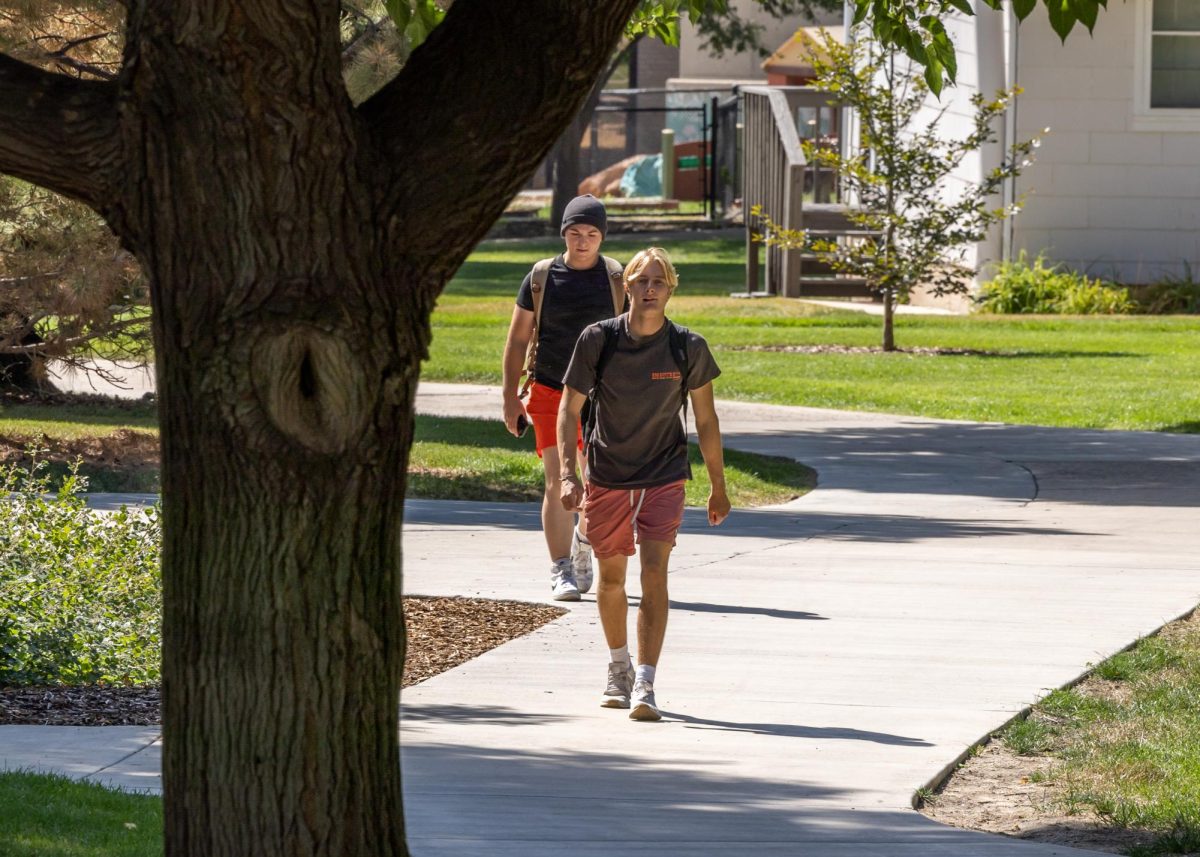Walkability is an integral part of thriving communities. It is a shame U.S. communities fail to embrace it, relative to other developed countries.
Walkable communities create happy and healthy citizens who can safely access their workplaces, homes, schools, markets, parks and other community spaces on foot.
Unfortunately, state and local governments make decisions that prevent walkability and put community well-being on the back burner.
It’s integral that governments improve zoning, infrastructure and land planning decisions to make U.S. communities walkable.
Us in Context
The walkability problem is an American problem. As only 12% of total trips taken in the U.S. are walked, the U.S. has one of the lowest walking rates in the world.
In Paris, France “only about 4% of all their trips [internal to Paris] are made by car,” said Tom Millar, a University of Utah professor and director of planning and design for the public lands department in Salt Lake City. Increasing walkability is no impossible feat nor is it a luxury. Walkability is a basic feature of a healthy society, and U.S. governments must make walkability a reality.
Rather than being good examples themselves, American communities must find examples of good walkability and society building within those countries that soar ahead of them. To become good examples, we first have to focus on change.
Zoning
Millar said the blame for the lack of walkability “goes first and foremost on land-use planning and zoning.”
Single-use zoning regulations divide cities into separated sections and designate those sections for specific purposes like commercial or residential use. The resulting spread-apart societies force people to rely on vehicles and disempower people from using active transportation.
State and local governments that support single-use zoning keep Americans reliant on the disease of vehicular travel.
Millar said oftentimes “things are just too far apart from each other” for walking and that large spacing is “the ultimate killer of walkability.” For a community to be walkable, Millar says “proximity … is number one.”
State and local governments must implement mixed-use zoning to ensure that all important destinations are close by. Mixed-use zoning creates happier, more walkable communities. Governments must not deny citizens the benefits any longer.
Dangerous Design
Even when distances are short, Americans walk a third as much as Japanese people, and under half as much as Europeans. Americans choose against walking because governments lack the foresight to create safe and comfortable walking environments.
According to Millar, emphasizing shade, benches and continuous sidewalks/walking infrastructure can create more “comfortable” walks.
Governments also prioritize vehicular travel at the expense of pedestrian safety. Dangerous planning decisions include fast speed limits, deadly road designs like multi-laned roads, limited lighting and crosswalks, rundown or nonexistent sidewalks and more.
These risk pedestrian safety and subsequently disincentivize walking.
The message is clear: cars are valued above our safety.
Pedestrian safety is a crisis. Deaths rose by 77% from 2010 to 2021. Pedestrian death levels from 2010 to 2018 rose over twice as quickly in the U.S. as levels did in several other countries. Many countries even saw death declines.
This points to a fundamental flaw in American planning decisions and safety.
No person should be endangered when performing such a fundamental human activity as walking. So long as governments fail to improve pedestrian infrastructure and road design, they disincentive walking and enable pedestrian deaths.
A Better Society
A plethora of concerns face society today. Climate change, obesity and social isolation are some concerns whose solutions require that walkability is at the forefront.
Transportation emits a substantial share of greenhouse gas emissions. By replacing driving with walking, we can greatly reduce these emissions.
It is unacceptable for the U.S. government and state governments to continue endorsing vehicle-centric communities. We must embrace walkability to minimize car emissions and reap the environmental benefits of walkability.
Unwalkable communities and the inactivity they encourage keep Americans sick. Those living in highly walkable areas are much less likely to experience obesity and diabetes.
So long as governments ignore the importance of walkable communities, they carry responsibility for the obesity crisis. We can mitigate this crisis with walkability, and governments should not stand idle any longer.
Millar said that without walkability, societies are “socially immature” and “fragile.” Walkable communities encourage social interaction and foster a strong sense of community.
Millar says when we fail to implement walkability we can “exclude all the individuals from each other.” In this time of social isolation, it is unacceptable for land use planning decisions to disconnect people further.
U and Beyond
Millar says, “Often universities – and [the U] is no exception – are … the most walkable places in the city.” Classes are in close walking proximity and are a “walkable distance [from campus] housing.”
Walkable campuses have wide sidewalks and bike paths, designated walking paths/bridges, slow speed limits and proximity to all wants and needs. We should use campuses as inspiration for creating walkable communities.
Millar says that emphasizing walkable infrastructure requires “less expensive public infrastructure.” This also means “more space for farmland [and] conservation and preservation.”
Walkability only benefits society.
“There’s literally no downside to walkable communities,” Miller said. “It’s pretty amazing that … more governments haven’t embraced it.”
Walkability is a winning lottery ticket, but governments are still failing to cash it in.
It is unacceptable for our government to remain inactive. We must embrace thoughtful land planning, zoning and infrastructure decisions to move towards a brighter, more walkable future.




